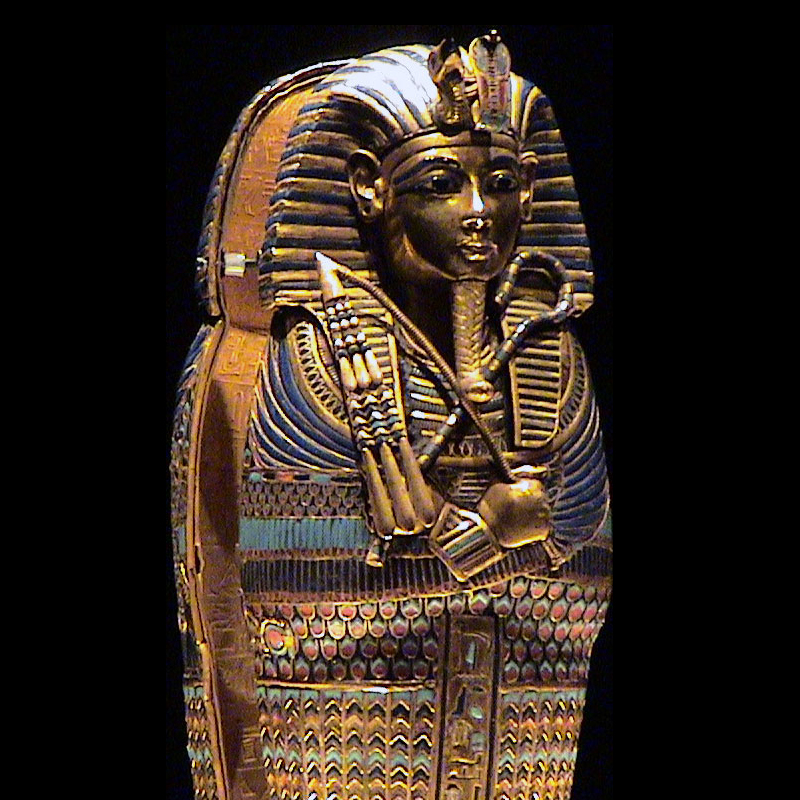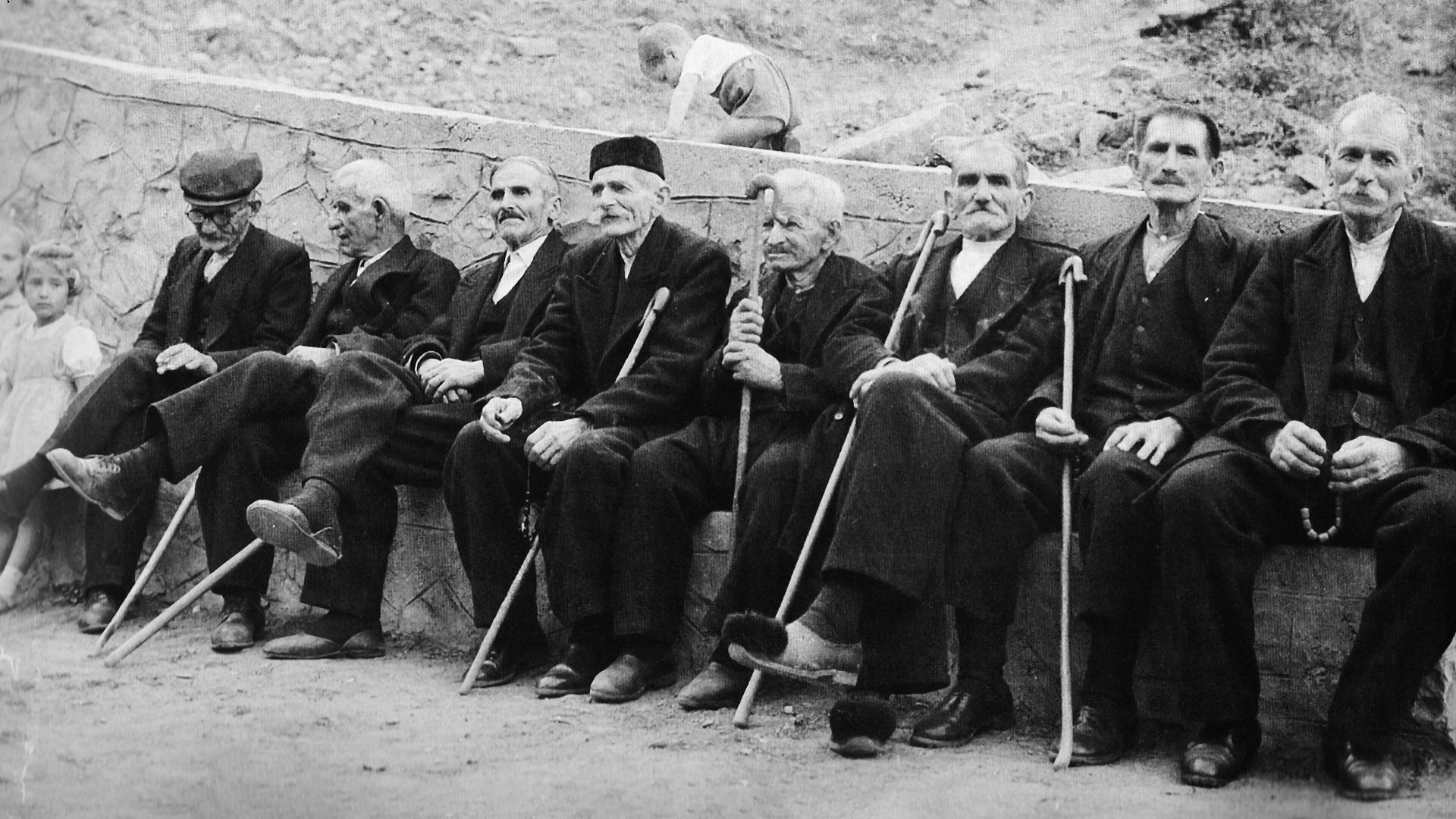Shepherds of the People
Leaders in antiquity were often portrayed as shepherds. What might we learn from that metaphor in a modern context?
Every shepherd well understands that domesticated sheep need the care of a good shepherd for their very survival. Sheep rely on a shepherd’s care because they have a tendency to wander, don’t know how to find nourishment and shelter, are wired to follow each other, are easily alarmed, and need protection from predators. Without supervision, their wool overgrows, leaving them susceptible to parasites and disease. In the end, without a shepherd to care for them, sheep would likely perish.
What about people? Do we also need good leaders and guides—shepherds, as it were—to help us prosper in life?
Our modern sensibilities may bristle at the mere thought of such a metaphor. Nineteenth-century philosopher Friedrich Nietzsche roundly criticized concepts relating to “herd morality” and “herd instinct.” Equally, the idea may raise thoughts of the derogatory noun sheeple—a portmanteau of sheep and people that suggests blind, unthinking submission.
However, while the metaphor may grate on our sense of self-determinism, the fact remains that from dictatorships to democracies, the many are still governed by the few.
This raises the question of whether the flaw lies in the metaphor itself or in our understanding of leadership. By sketching the historical origins and transmission of the concept of rulers as shepherds, we can better weigh what it means for us today.
Origins of the Shepherd-Ruler Metaphor
The concept originated in ancient Sumer, Mesopotamia, where people in antiquity depended on sheep and fully understood the reliance of these animals on their shepherd.
King lists discovered in this part of the world record some early legendary rulers with the curious accompanying epithet of “the shepherd,” among them one named Etana. While not yet directly known from the archaeological record, a legend about him suggests that the phrase was a reference to his kingship. As such, it offers clues to the origins of the idea of king as shepherd.
Many cylinder seal depictions of Etana, which some believe represent scenes from his life, also show a shepherd. In one, the shepherd carries a staff and a flail (or whip) and tends sheep and goats. In another, the shepherd sits on a throne and wears a hat with horns, signaling a Sumerian shepherd-god—namely Dumuzid, the purported lover of the goddess Inanna. In Etana’s myth, Inanna sought to establish a “shepherd” (meaning a king)—in this case, Etana. Here, then, we see recorded a very early example of the idea of king as divine shepherd.
Indeed, the Sumerians deified several early shepherd-kings. At Uruk, for example, a ruler known as Lugalbanda was also given the epithet of “shepherd.” Lugalbanda is sometimes linked to another deified king, Gilgamesh, referred to in Mesopotamian literature as “the shepherd of Uruk the Sheepfold.” This is notable because it clearly identifies the residents of Uruk as sheep of the shepherd, King Gilgamesh.
While we might view such legendary figures as the stuff of fiction, certainly the idea continued for kings attested in the archaeological record, demonstrating that the motif of divine shepherd-king endured in ancient Mesopotamia. For instance, the late Assyriologist Samuel Noah Kramer suggested that one text, translated literally, indicates that Lugal-Anne-Mundu “‘made lie in the pastures’ the peoples of all the lands.” Additionally, a Sumerian hymn proclaims Shulgi of the Third Dynasty of Ur to be “the righteous Shepherd of Sumer.”
Transition of an Idea
In the Old Babylonian Empire, the Amorite shepherd-king Hammurabi emulated Marduk, the chief god of Babylon, of whom is written in a Babylonian creation myth, “Let him exercise shepherdship over mankind.” Hammurabi says in the epilogue to his famous law code, “The great gods have called me, I am the salvation-bearing shepherd, whose staff is straight.” That’s quite a claim, implying that shepherd-kings believed themselves to be divine saviors of the people.
“Hammurabi, the prince, called of Bel am I, . . . the shepherd of the oppressed and of the slaves.”
But long before the reign of Hammurabi, the idea of king as shepherd had also emerged in ancient Egypt.
Iconography from the beginning of Egypt’s dynastic history depicted a flail in the hands of Pharaoh Djer, whom Egyptologists have assigned to the First Dynasty. From Egypt’s Second Dynasty, kings held both a crook and a flail. This iconography persisted, perhaps most famously in the image of the innermost coffin of Tutankhamun. It shows the king clutching the shepherd’s crook in one hand and the flail in the other. While the crook is clearly a shepherd’s crook, denoting kingship, scholars debate the flail as having been used either to goad livestock and protect from predators, or in harvesting crops. The crook and flail have been interpreted as portraying the king as guide and restraining authority figure. In fact, the hieroglyph for “ruler” in Egypt was the image of a shepherd’s crook.
But the claims of pharaohs as shepherds of the people went further than merely the mortal realm. Just as Hammurabi had claimed to be a king-shepherd bringing salvation, so too at times in Egyptian history did pharaohs claim to be able to lead their people to the afterlife. Egyptians invested great care and attention in a deceased pharaoh’s mummification, funerary rites, pyramid and mortuary temple. They believed that only by guaranteeing that the pharaoh successfully made it to the next world could his subjects join him there.
Initially, the crook-and-flail imagery in Egypt was associated with the god Andjety, whom scholars consider one of the earliest Egyptian gods and the precursor of Osiris. It is Osiris, the god of the land of the dead, who came to be most strongly associated with the crook-and-flail iconography in connection with the Egyptian idea of kingship. Osiris’s closest equivalent deity in Sumer was Dumuzid, the shepherd. Like Dumuzid, the ancients saw Osiris as a resurrected god and depicted both of them as shepherd-gods directly linked to kingship. When a pharaoh died, his subjects believed he would unite with Osiris, their original shepherd-god king.

This carved coffinette, designed to hold the mummified liver of Egypt’s King Tutankhamun, depicts the ruler holding the iconic shepherd’s crook and flail.
No machine-readable author provided. Kaveh assumed (based on copyright claims), CC BY-SA 2.5, via Wikimedia Commons
The Ancient Hebraic World
The history of ancient Israel, as recorded in the Hebrew Scriptures, overlaps in time with much of what we have considered so far. That history includes the stories of multiple shepherds and shepherdesses. Here the shepherd-leader metaphor is also apparent to scholars, but they present it differently. The role of shepherd was more literal for many of the Hebrew patriarchs, leaders and even kings. For example, Abraham, who began life in Mesopotamia, was an owner of vast flocks and herds. His son and grandson, Isaac and Jacob, inherited much of that livestock.
When Jacob took his family and herds down into Egypt to seek food, he found a pharaoh who had been struggling with severe famine. Jacob’s son Joseph instructed his brothers to tell Pharaoh, “Your servants are shepherds, both we and also our fathers” (Genesis 47:3). As a result, Jacob’s family settled as official shepherds in the separate area of Goshen, in the lush Nile Delta, prior to the time of their famous enslavement.
Moses was also a literal shepherd for 40 years before returning to Egypt to lead Israel to the Promised Land.
Following their departure from Egypt and their settling in Canaan, Israel eventually requested the establishment of a monarchy. Famous among the subsequent kings was a shepherd named David. In stark contrast to the self-styled divine shepherd-kings of some nearby nations, David did not claim divinity for himself but instead wrote a poem stating that the Lord [Yahweh] was his shepherd. In the Near East, shepherds led their flocks rather than driving them. David’s poem (Psalm 23) tells of how Yahweh would provide for all his needs and lead him to an eternal future.
“To read Psalm 23 is to imagine the ancient psalmist as a sheep related to a shepherd.”
This same Yahweh became Jesus Christ, described in the book of Hebrews as “that great Shepherd of the sheep.” Jesus made a clear distinction between Himself as “the good shepherd” and the hired man “who is not the shepherd.” He explained that “the good shepherd gives His life for the sheep,” while the hired man “does not care about the sheep” (John 10:11–13).
In Israel’s history, however, not all kings showed themselves to be good shepherds. In order to reign successfully, they were required to write out and practice the Torah. Only by upholding Israel’s God-given law in society could kings ensure that they were leading the people in the ways of ancient Israel’s real Shepherd, Yahweh. At times, the Hebrew Scriptures even described the nation’s leaders as “bad shepherds” and called them out for not upholding the Torah: “With force and cruelty you have ruled them” (Ezekiel 34:4).
Carrying the Metaphor Forward
According to academic Jørn Varhaug, the shepherd-ruler metaphor was still discernible down to the reign of Assyria’s Ashurbanipal, whose coronation in 673 BCE included “ceremonies of shepherdship.”
Likewise the prophet Isaiah, writing during the eighth century BCE, recorded God’s words concerning Cyrus the Great: “He is My shepherd, and he shall perform all My pleasure” (a reference to the fact that Cyrus would sack Babylon and release the Israelites, who by this time were in captivity there).
Ironically, Varhaug contends, Cyrus would not have viewed himself as a shepherd. Varhaug notes that the Persians seem to have depended more on eating wheat than rearing vast herds of sheep for consumption. He surmises that there may have been an established understanding “of the pre-Persian shepherd-kings as abominable, characterized by violence, luxury, sloth and other vices.”
Varhaug argues that “from the Persian Achaemenid period, 550 BCE, the metaphor disappears, not only from the Persian Empire, but also from the contemporary Greek and Egyptian texts.” Though more recently it was sometimes used of European monarchs, it was generally in a Christian context. For example, when Charles V became emperor of the Holy Roman Empire in 1519 CE, his grand chancellor, Mercurino di Gattinara, believed that God had set him “on the way towards a world monarchy, towards the uniting of all Christendom under a single shepherd.” That may be why we often see the shepherd’s crook in Christian iconography today.
“The symbol of rule with the longest history seems to be the shepherd’s crook. . . . This is entirely appropriate, since the crook symbolised the very concept of rule.”
Though the metaphor of divine shepherd-ruler is no longer relevant in the context of modern leadership, perhaps we can still detect the basic outline of the shepherd-leader today. One could argue that dictatorships depend on their use of a metaphorical flail, while liberal democracies tend to place greater emphasis on employing the guiding crook.
Yet if the metaphor is still at all discernible, then its modern iteration is perhaps best characterized by a breakdown in trust between sheep and shepherds. Disillusionment with the elite and a desire for change has seen a shifting dynamic between these roles. While people have always revolted against leaders from time to time, the rise of populism has perhaps revealed new lows in the relationship between leader and led. Though this political trend purports to be a uniting force in society, in reality it is often divisive.
MIT political science professor Suzanne Berger, writing on the topic of populism, points to a 2014 cartoon in the Greek publication To Pontiki. Cartoonist Panos Zacharis depicts three sheep looking at an election poster featuring a wolf wearing a swastika armband. One sheep says to the others, “I think I’ll vote for the wolf. That will really show the shepherd.” This suggests that the sheep’s respect for the shepherd has sunk very low indeed. Berger says of the cartoon, “It’s not that the sheep believes the wolf will act in the sheep’s interest. It’s that voting for the wolf gets back at the shepherd—even at the expense of the sheep’s eventual fate as the wolf’s dinner.”
This takes us back to the derogatory sheeple portmanteau, casting people as unthinking, undiscerning. We human beings do appear to be hardwired, at times and under certain circumstances, to follow others—for good or ill, and sometimes blindly. That may involve flocking with other sheep under a particular populist leader, or it may mean following that leader directly.
The Good Shepherd
While the metaphor of rulers as shepherds may appear antiquated to us today, the fact remains that we are always under someone’s leadership—even if only our own. In the political sphere, the few still govern the many. As such, the broad outline of the metaphor remains intact, if largely unspoken.
So how do we go forward from here? History makes it clear that the largely missing element is the ability to live up to the ideal that the metaphor suggests. Bad shepherds—really wolves in sheep’s clothing—have always served themselves at the people’s expense.
By contrast, a good shepherd is motivated only by a deep care for the well-being of the sheep. Likewise, a good sheep is willing to follow an effective shepherd in a trusting relationship. Making that a reality would involve replacing the selfishness and greed latent in all of us with the more elusive qualities of humility, self-sacrifice and love.
Nearly all the kings we have looked at here were styled as shepherds of the people. Many pretended to be god-shepherds in order to claim sufficient authority, insight and power to lead, provide for, and even offer salvation to the people; but the basis for their claims was bogus and often exploitative.
One exception was Israel’s king David, who said in his poem that Yahweh was his shepherd—the “good shepherd” cited in the later Apostolic Writings. In order to thrive, sheep need good shepherds. As such, the metaphor of the shepherd of the people is not broken, just much abused and not yet realized in its full potential.


